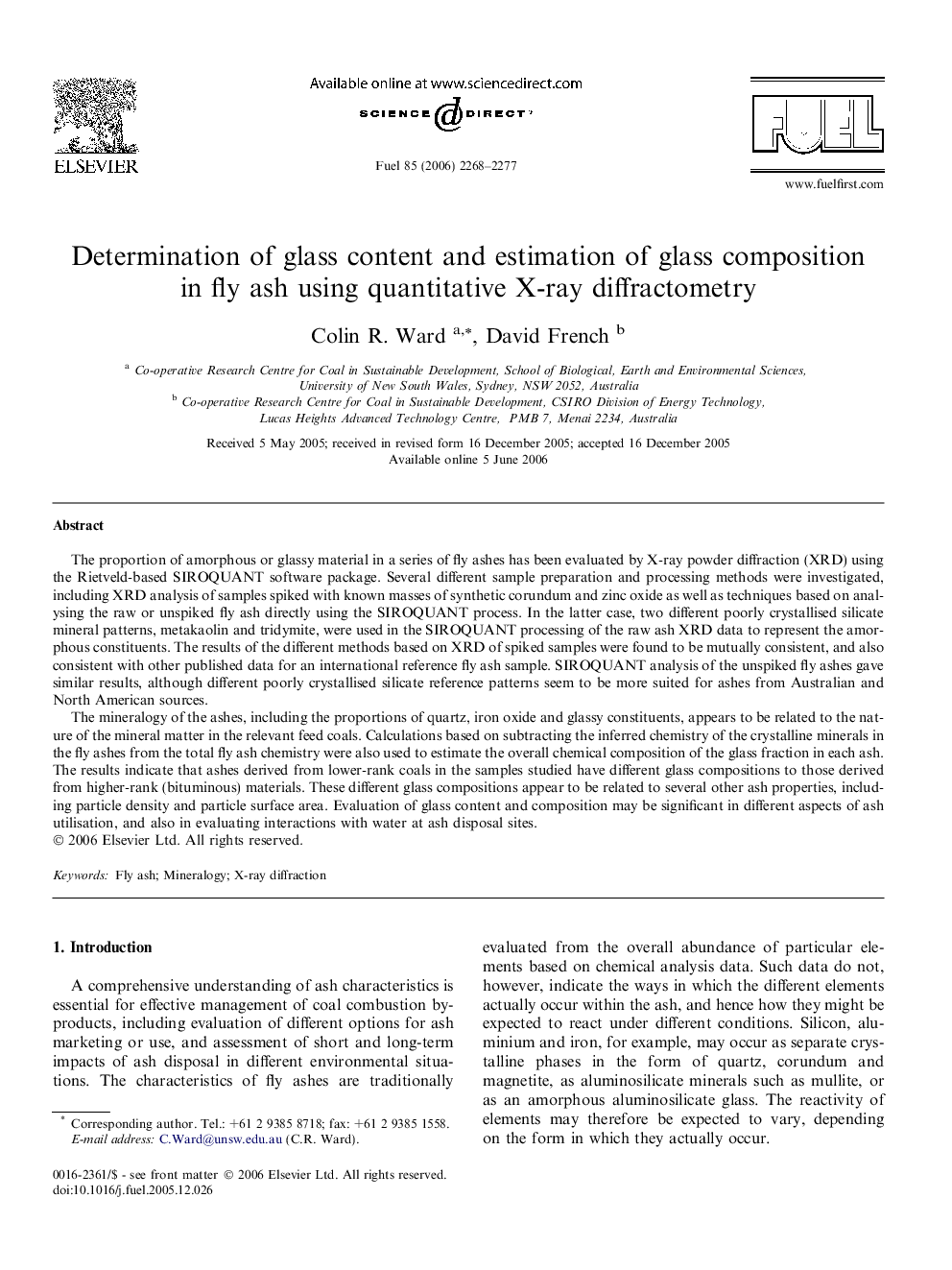| Article ID | Journal | Published Year | Pages | File Type |
|---|---|---|---|---|
| 208453 | Fuel | 2006 | 10 Pages |
The proportion of amorphous or glassy material in a series of fly ashes has been evaluated by X-ray powder diffraction (XRD) using the Rietveld-based SIROQUANT software package. Several different sample preparation and processing methods were investigated, including XRD analysis of samples spiked with known masses of synthetic corundum and zinc oxide as well as techniques based on analysing the raw or unspiked fly ash directly using the SIROQUANT process. In the latter case, two different poorly crystallised silicate mineral patterns, metakaolin and tridymite, were used in the SIROQUANT processing of the raw ash XRD data to represent the amorphous constituents. The results of the different methods based on XRD of spiked samples were found to be mutually consistent, and also consistent with other published data for an international reference fly ash sample. SIROQUANT analysis of the unspiked fly ashes gave similar results, although different poorly crystallised silicate reference patterns seem to be more suited for ashes from Australian and North American sources.The mineralogy of the ashes, including the proportions of quartz, iron oxide and glassy constituents, appears to be related to the nature of the mineral matter in the relevant feed coals. Calculations based on subtracting the inferred chemistry of the crystalline minerals in the fly ashes from the total fly ash chemistry were also used to estimate the overall chemical composition of the glass fraction in each ash. The results indicate that ashes derived from lower-rank coals in the samples studied have different glass compositions to those derived from higher-rank (bituminous) materials. These different glass compositions appear to be related to several other ash properties, including particle density and particle surface area. Evaluation of glass content and composition may be significant in different aspects of ash utilisation, and also in evaluating interactions with water at ash disposal sites.
